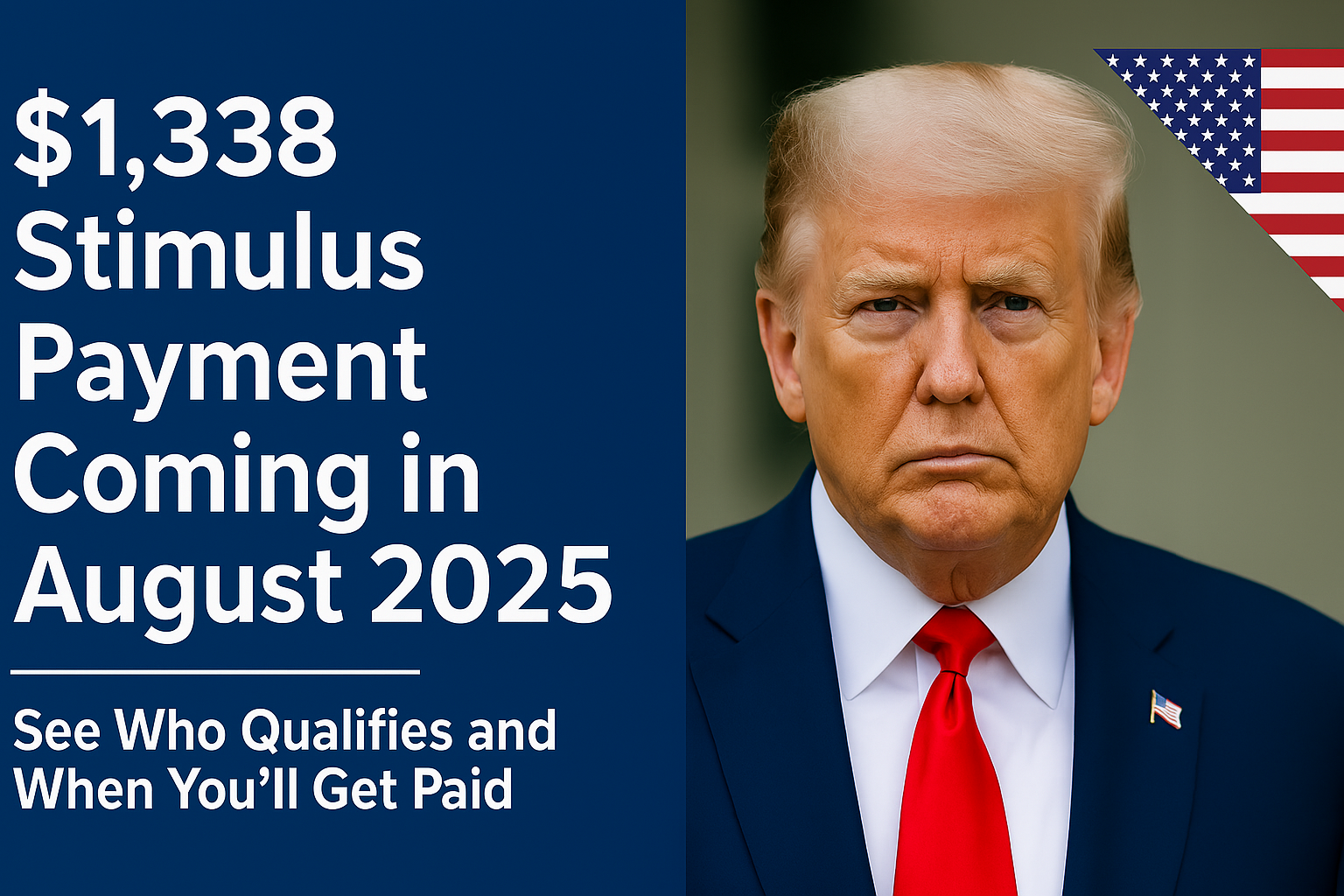As part of ongoing economic relief efforts, the U.S. government has confirmed a $1,338 stimulus payment set to be distributed in August 2025. This one-time payout is aimed at helping millions of American households offset inflation-related costs, rising living expenses, and continued financial strain post-pandemic.
If you’re wondering whether you qualify for the payment—or when you can expect to receive it—here’s a full breakdown of eligibility rules, payment timelines, and how to prepare.
What Is the $1,338 Stimulus Payment?
The $1,338 payment is a federally issued direct financial relief designed to support individuals and families still impacted by economic pressures in 2025. It combines various relief measures under existing federal support initiatives, including:
- Cost-of-living adjustment (COLA) top-ups
- Income-based relief for low- and middle-income households
- One-time credits for dependents and caregivers
This payment is not taxable and is expected to benefit tens of millions of qualified recipients across the country.
Who Is Eligible for the August 2025 Stimulus?
To qualify for the $1,338 stimulus check, individuals must meet a combination of income, residency, and tax-filing requirements. Here are the key eligibility criteria:
- U.S. Citizens or Permanent Residents
- Filed a federal tax return for 2024
- Adjusted Gross Income (AGI) thresholds:
- Up to $75,000 for single filers
- Up to $112,500 for head of household
- Up to $150,000 for married couples filing jointly
Those who receive Social Security, SSDI, SSI, or VA benefits may also automatically qualify, even if they haven’t filed a recent tax return.
Families with eligible children or dependents could receive additional amounts per dependent, though these amounts vary by household.
When Will the Stimulus Be Paid?
The IRS has announced that payments will begin to roll out from mid to late August 2025. Most recipients will receive their $1,338 stimulus via:
- Direct deposit (if bank details are on file with the IRS)
- Paper checks (for those without bank-linked tax filings)
- Prepaid debit cards (in limited cases)
Exact payment dates will depend on your tax filing status, method of receiving prior payments, and whether your details are up to date with the IRS.
How to Check Your Payment Status
You can track the status of your stimulus payment using the IRS “Get My Payment” tool or by logging into your account at IRS.gov. Make sure your banking information and mailing address are correct to avoid delays.
No Application Required
Like past federal stimulus rounds, no formal application is necessary. Payments will be processed automatically by the IRS based on your latest tax records and benefit status.
However, if you haven’t filed taxes recently or your income dropped significantly in 2024, filing a 2024 federal tax return as soon as possible is strongly recommended to ensure eligibility.
Why Is the Government Issuing This Payout?
With cost-of-living concerns still affecting millions of Americans, especially those in lower-income brackets or living on fixed retirement benefits, this stimulus is intended to provide timely financial relief. It comes at a crucial time before the fall, when many households face increased costs related to housing, education, and healthcare.
This payout follows a series of federal and state-level support packages designed to stabilize household finances and address widening inequality in post-pandemic recovery efforts.
Final Thoughts
The $1,338 stimulus payment in August 2025 could offer vital support to those struggling with ongoing economic challenges. If you meet the eligibility criteria, there’s nothing more you need to do except ensure your IRS records are current.
Be on the lookout for official IRS updates and make sure you’re ready to receive the funds via your preferred method. With automatic processing and broad eligibility, this stimulus aims to provide meaningful help—when Americans need it most.

